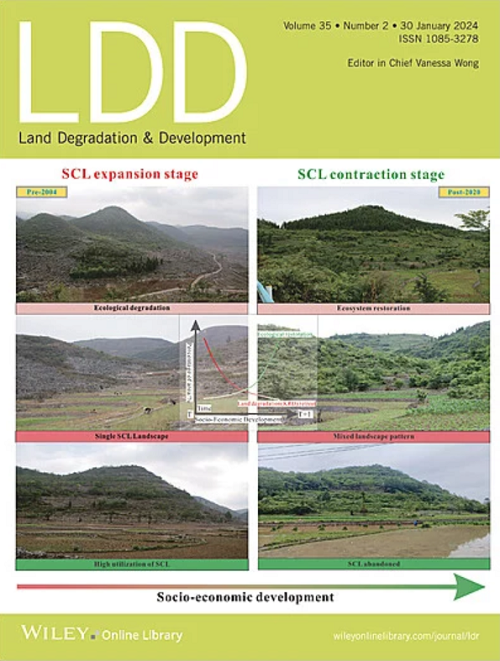Spatiotemporal Dynamics of Vegetation Net Primary Productivity and Its Drivers in China's Three Eco-Zones and Four Shelterbelts Region
IF 3.6
2区 农林科学
Q2 ENVIRONMENTAL SCIENCES
引用次数: 0
Abstract
Understanding the spatiotemporal dynamics of vegetation carbon stocks in ecologically functional areas and identifying their driving factors remain crucial for informing ecosystem protection and restoration efforts. The three eco-zones and four shelterbelts (TEFS) region encompasses critical ecological barriers and functional zones in China. Utilizing MODIS NDVI data, alongside climatic and topographic variables, we developed regionally optimized models to estimate net primary productivity (NPP) across the TEFS region from 2000 to 2023. Subsequently, the spatiotemporal variability of vegetation NPP and its associated drivers were explored using trend analysis, correlation, and residual analysis. The results revealed a significant NPP increase in approximately 90% of the TEFS region between 2000 and 2023, with an average annual increase rate of 3.46 gC m−2 yr−1. The most rapid increases occurred in ecological zones along the Yellow River basin. NPP changes were driven by the combined effects of climate change (CC) and human activities (HA) over the 24-year period. While CC contributed positively to NPP changes in 67.9% of the total area, HA had a positive impact in 75.4% of the region. Notably, HA dominated as the primary driver in western regions, whereas CC exerted a stronger influence in many eastern areas. Enhanced efforts in desertification control and protection of coastal wetland ecosystems are recommended to improve carbon sequestration potential.中国三生态区四防护林植被净初级生产力时空动态及其驱动因素
了解生态功能区植被碳储量的时空动态及其驱动因素对生态系统保护和恢复具有重要意义。三生态区和四防护林(TEFS)区域涵盖了中国的关键生态屏障和功能区。利用MODIS NDVI数据,结合气候和地形变量,我们开发了区域优化模型来估算2000 - 2023年TEFS区域的净初级生产力(NPP)。通过趋势分析、相关分析和残差分析,探讨了植被NPP的时空变异特征及其驱动因素。结果表明,2000 ~ 2023年间,90%的TEFS区域NPP显著增加,年平均增幅为3.46 gC m−2 yr−1。增长最快的是黄河流域生态带。NPP变化受气候变化(CC)和人类活动(HA)的综合影响。CC对该区67.9%的NPP变化有正面影响,而HA对该区75.4%的NPP变化有正面影响。值得注意的是,HA在西部地区占主导地位,而CC在东部许多地区的影响更大。建议加强荒漠化防治和滨海湿地生态系统保护,以提高固碳潜力。
本文章由计算机程序翻译,如有差异,请以英文原文为准。
求助全文
约1分钟内获得全文
求助全文
来源期刊

Land Degradation & Development
农林科学-环境科学
CiteScore
7.70
自引率
8.50%
发文量
379
审稿时长
5.5 months
期刊介绍:
Land Degradation & Development is an international journal which seeks to promote rational study of the recognition, monitoring, control and rehabilitation of degradation in terrestrial environments. The journal focuses on:
- what land degradation is;
- what causes land degradation;
- the impacts of land degradation
- the scale of land degradation;
- the history, current status or future trends of land degradation;
- avoidance, mitigation and control of land degradation;
- remedial actions to rehabilitate or restore degraded land;
- sustainable land management.
 求助内容:
求助内容: 应助结果提醒方式:
应助结果提醒方式:


